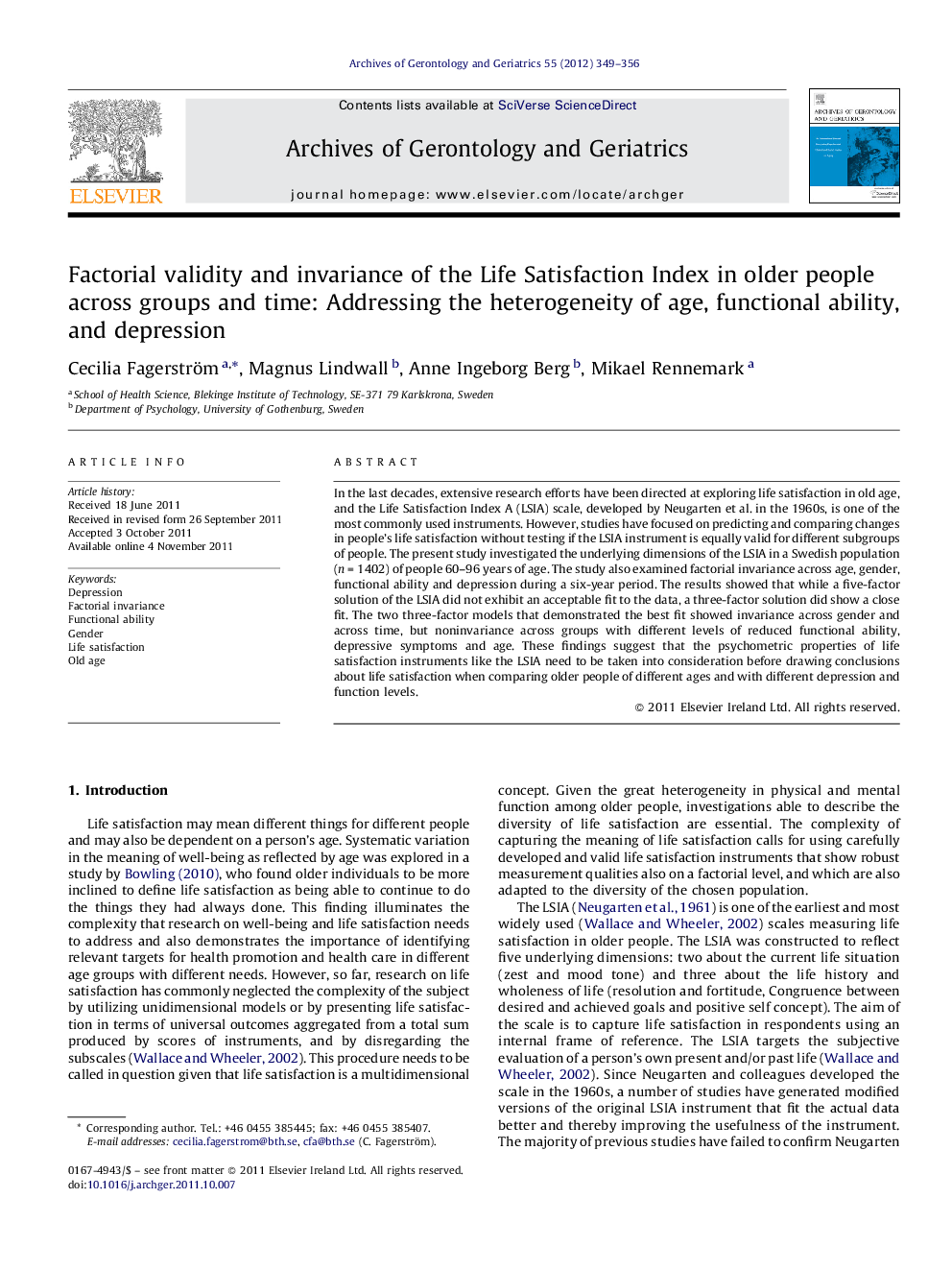| Article ID | Journal | Published Year | Pages | File Type |
|---|---|---|---|---|
| 1903438 | Archives of Gerontology and Geriatrics | 2012 | 8 Pages |
In the last decades, extensive research efforts have been directed at exploring life satisfaction in old age, and the Life Satisfaction Index A (LSIA) scale, developed by Neugarten et al. in the 1960s, is one of the most commonly used instruments. However, studies have focused on predicting and comparing changes in people's life satisfaction without testing if the LSIA instrument is equally valid for different subgroups of people. The present study investigated the underlying dimensions of the LSIA in a Swedish population (n = 1402) of people 60–96 years of age. The study also examined factorial invariance across age, gender, functional ability and depression during a six-year period. The results showed that while a five-factor solution of the LSIA did not exhibit an acceptable fit to the data, a three-factor solution did show a close fit. The two three-factor models that demonstrated the best fit showed invariance across gender and across time, but noninvariance across groups with different levels of reduced functional ability, depressive symptoms and age. These findings suggest that the psychometric properties of life satisfaction instruments like the LSIA need to be taken into consideration before drawing conclusions about life satisfaction when comparing older people of different ages and with different depression and function levels.
